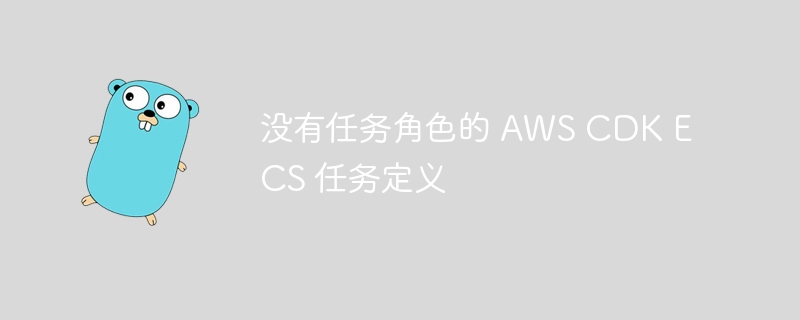Home >Backend Development >Golang >AWS CDK ECS task definition without task role
AWS CDK ECS task definition without task role
- PHPzforward
- 2024-02-08 23:03:171094browse

php Editor Xinyi will introduce to you the AWS CDK ECS task definition without task role in this article. AWS CDK (Cloud Development Kit) is a software development kit that can be used to programmatically define and deploy AWS infrastructure. ECS (Elastic Container Service) is a managed container service that allows you to easily run, stop, and manage Docker containers. When using the CDK to create an ECS task definition, you typically need to provide permissions for the task role. However, sometimes we may not want to use a task role but want to use the IAM role directly from the task definition. This article details how to create an ECS task definition without a task role in the CDK.
Question content
In aws cdk v2, the ecs taskdefinition l2 construct has the optional attribute taskrole (if not specified), the cdk default behavior is to create the task role. However, I don't want to set a task role for this resource, it's not really needed in AWS - the task definition can run without this attribute. How do I manage this in cdk? I don't see any way to unset that task role or not generate it first. Do I need to fall back to the l1 construct for this? My configuration:
taskDefinition := awsecs.NewEc2TaskDefinition(stack, jsii.String(deploymentEnv+service.Tag+"TaskDef"), &awsecs.Ec2TaskDefinitionProps{
Family: jsii.String(deploymentEnv + service.Tag),
NetworkMode: awsecs.NetworkMode_BRIDGE,
//TaskRole: what can i do here to fix this
Volumes: &[]*awsecs.Volume{
&efs_shared_volume,
},
})
Solution
You can use tryremovechild Escape HatchMethod:
// remove the role
taskDefinition.Node().TryRemoveChild(jsii.String("TaskRole"))
// remove the reference to the role
t := taskDefinition.Node().DefaultChild().(awsecs.CfnTaskDefinition)
t.AddPropertyDeletionOverride(jsii.String("TaskRoleArn"))
The trick is to identify the construct id. You sometimes need to do this in source code.
The above is the detailed content of AWS CDK ECS task definition without task role. For more information, please follow other related articles on the PHP Chinese website!

